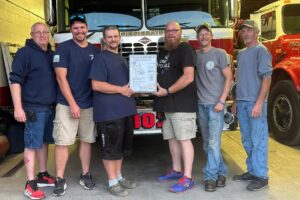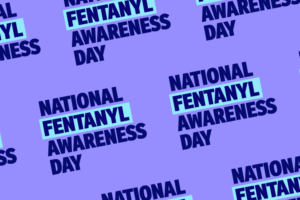Common Questions About Narcan
We use harm reduction strategies like seatbelts, helmets, and designated drivers all the time to make risky behaviors safer. Narcan (the brand name of naloxone) is no different, and it’s safe to use.
Narcan is an FDA-approved medication that can reverse an opioid overdose. It’s safe and easy to use, and it’s available without a prescription in New York. If you or someone you know is at risk for an overdose, Narcan could save their life.
Below are some common questions about Narcan and fentanyl, the potent synthetic opioid that has been increasingly contaminating
Why should I carry naloxone (Narcan®)?
Anyone who uses opioids can overdose. This can happen for many reasons: for instance, because they forgot if they took their prescription already, or because they don’t know what they’re taking. If you or a loved one use an opioid–legally prescribed or illicit opioids like heroin–it’s important to have naloxone around. Make sure you and your friends are trained and know where the naloxone is kept.
People who previously used opioids and have stopped are at higher risk for an overdose. This includes people who have completed a detox program or have recently been released from jail, a residential treatment center, or the hospital. These people now have a lower tolerance for opioids and can overdose more easily.
The illicit drug supply is getting increasingly contaminated with illegally produced fentanyl, which means it takes even less to overdose. Fentanyl has been reported in a wide variety of illicit drugs, not just opioids. That means it’s smart to have naloxone around if you use any illicit drugs, not just opioids. Naloxone should be given at any sign of an overdose. It will not work to reverse an overdose if a person has not taken opioids, but naloxone should always be tried in case fentanyl has been added. It has no harmful effect if opioids are absent.
Who can use naloxone?
Anyone can carry and use naloxone on someone who is overdosing on an opioid. Narcan® nasal spray is a ready-to-use, needle-free medicine that can be used without any special training. You can watch a video training and get a kit mailed to you at scbhcc.org/narcan-training/
They require no assembly and are sprayed into one nostril while the person lies on their back. The spray bottle (atomizer) is small and can fit in your pocket, purse, or glove compartment.
Carrying naloxone does not mean that you are encouraging people to misuse opioids or other drugs. It just means that you are ready to save a life if they overdose.
For more information on laws that protect people who prescribe, carry, and use naloxone, please visit the New York State Good Samaritan Law page.
Is naloxone safe?
Naloxone is an FDA-approved medication that is very safe and saves lives. It can be given to anyone showing signs of an opioid overdose, even if you are not sure if they have used opioids. Naloxone is not addictive and cannot be used to get high.
Naloxone
- has been proven to be extremely safe, with no negative effects on the body if the person has not used opioids
- can also be used on pregnant women in overdose situations
- does not cause any life-threatening side effects
People with physical dependence on opioids may have signs of withdrawal within minutes after they are given naloxone, but this is normal and good because it means that the naloxone is helping the person to breathe again. Normal withdrawal symptoms can include headaches, changes in blood pressure, anxiety, rapid heart rate, sweating, nausea, vomiting, and tremors. These symptoms are not life threatening but can be uncomfortable.
Does naloxone promote opioid use?
Research has shown that naloxone does not lead to more drug use or riskier drug use. In fact, some studies have shown that naloxone results in a decreased use of opioids. Naloxone use causes opioid withdrawal symptoms, which is unpleasant.
Where can I go to learn more about fentanyl? How prevalent is it here locally?
To learn more, visit this NIDA fact page: www.nida.nih.gov/publications/drugfacts/fentanyl
Locally, most fatal overdoses do include fentanyl. Harm reduction organizations and local law enforcement have also reported the presence of it not only in heroin but other street drugs. To learn more about local opioid and overdose trends, visit the Healing Cortland Dashboards here: www.healingcortland.org/data-dashboards
Can someone overdose from touching fentanyl?
Skin exposure is not expected to lead to toxicity due to its extremely poor penetration of the skin barrier. Symptoms of intoxication from skin exposure are unlikely. However, you may consider taking universal precautions and if your skin is exposed to fentanyl, you should wash the area with water as quickly as possible. Do not use alcohol based hand sanitizers or bleach; they do not effectively wash opioids off skin and may increase skin absorption of fentanyl.
Why might someone use or seek out fentanyl?
Fentanyl is a more inexpensive and potent opioid. Studies show that most fentanyl use may occur inadvertently. However, increasingly some individuals who use drugs, do seek out fentanyl for various reasons. Some of these include: they prefer the drug effects to that produced by heroin, they use fentanyl to prevent withdrawal due to increased opioid tolerance from past use, and it is less expensive.
Research has also found that intentional use, however, may also occur reluctantly when high fentanyl saturation of local drug markets reduces access to safer options.
Read more about this: www.sciencedirect.com/science/article/abs/pii/S095539592100308X





